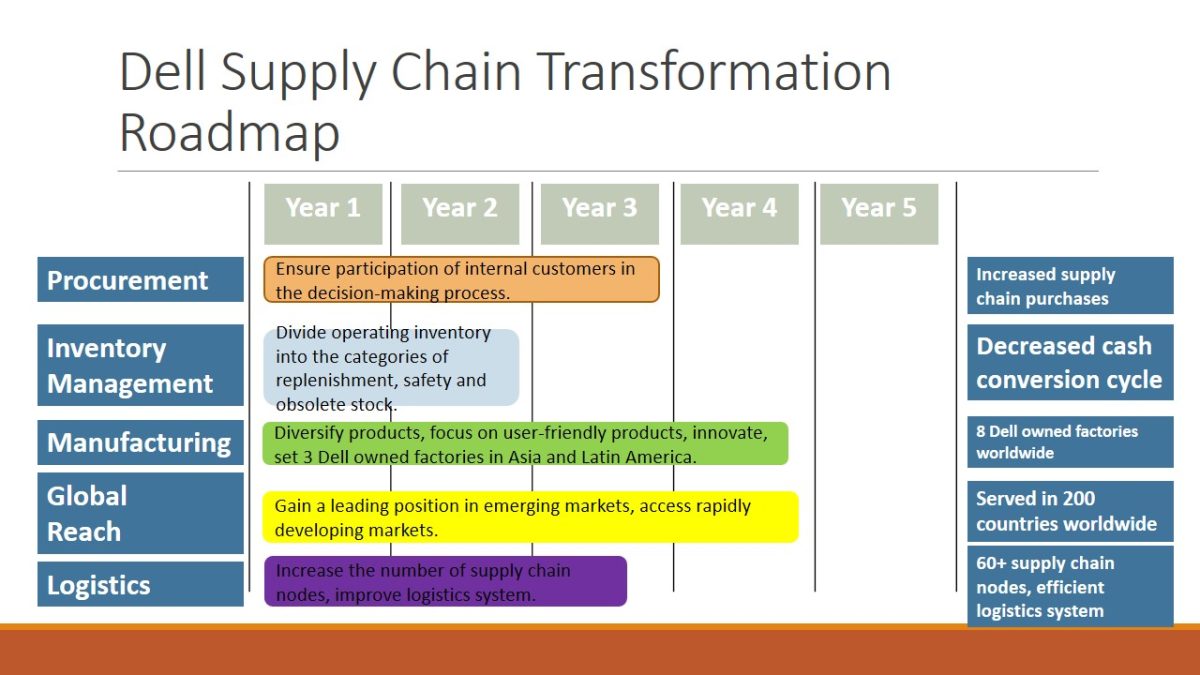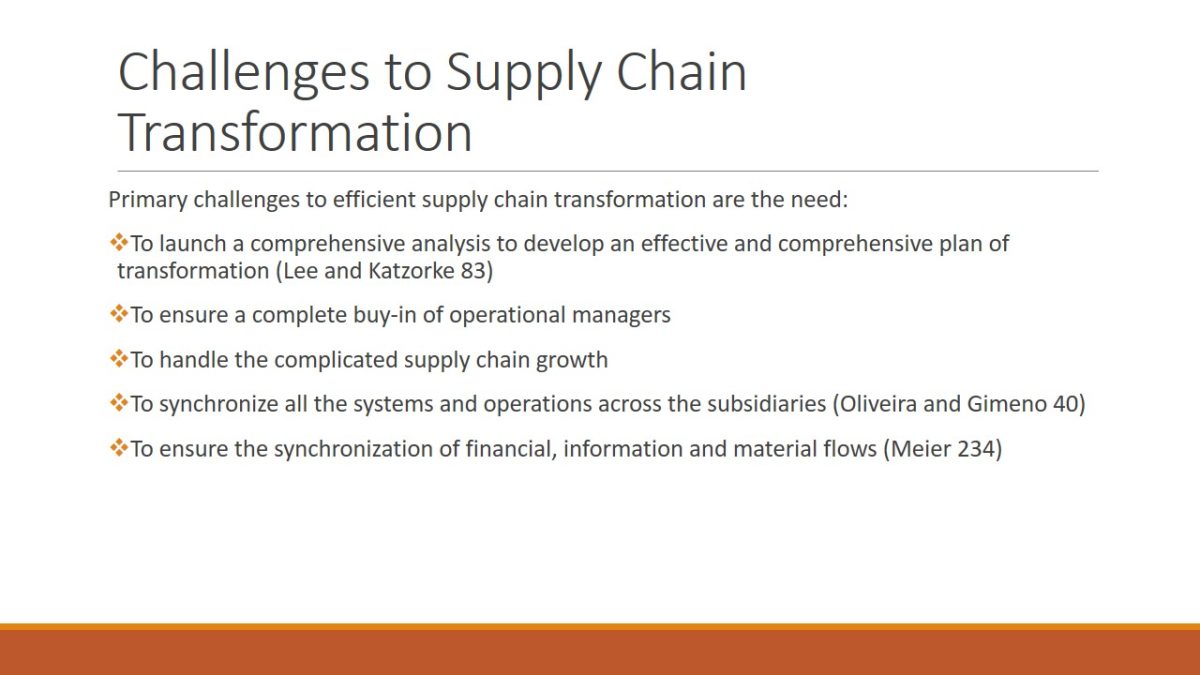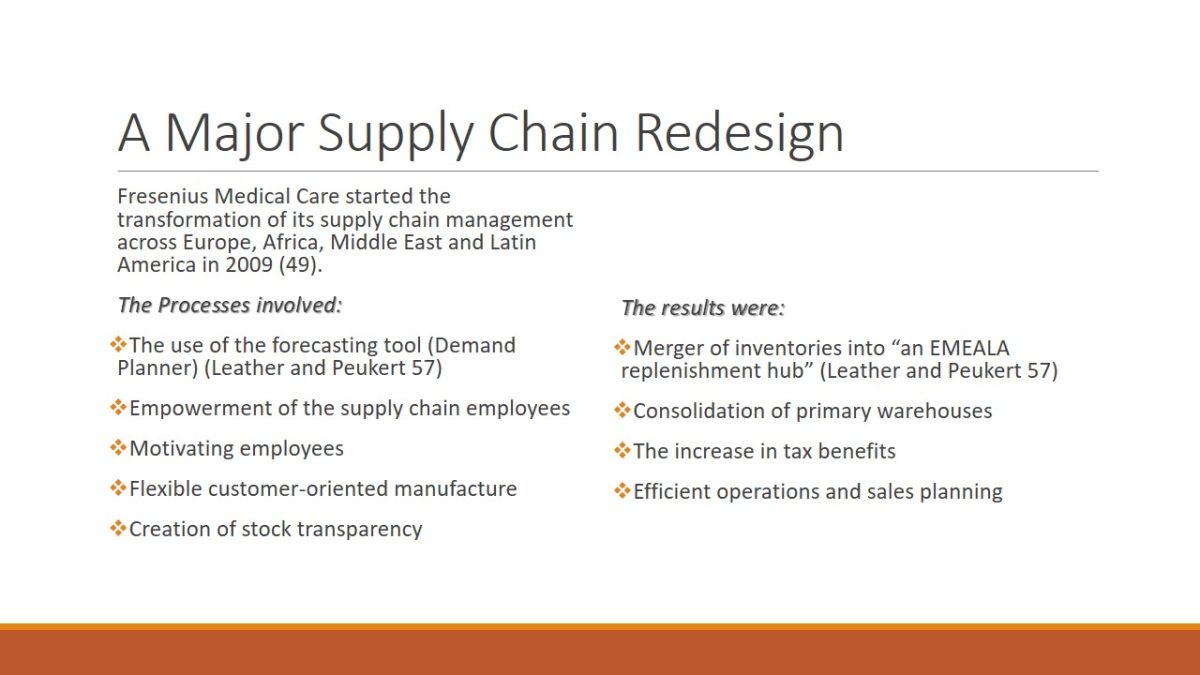
Supply Chain Segmentation
- What is supply chain segmentation?
- Supply chain segmentation is the process that implies the development of different supply chain processes, operational modes as well as policies for different channels (Thomas).
- Why is it vital for the supply chain transformation?
- Reduces complexity (Sabri 88);
- Increases standardization;
- Expands integration;
- Matches customer’s value (“Supply Chain Videocast”).
Dell used supply chain segmentation and improved its performance significantly (Thomas).
It reduces complexity as it is easier to analyze a number of simple processes. It is easier to set standards. A single process can be developed to manage the demand, supply, inventory and so on. It enables to develop an efficient operational strategy that will balance the customer’s needs with the need for efficiency.

Challenges to Supply Chain Transformation
Primary challenges to efficient supply chain transformation are the need:
- To launch a comprehensive analysis to develop an effective and comprehensive plan of transformation (Lee and Katzorke 83);
- To ensure a complete buy-in of operational managers;
- To handle the complicated supply chain growth;
- To synchronize all the systems and operations across the subsidiaries (Oliveira and Gimeno 40);
- To ensure the synchronization of financial, information and material flows (Meier 234).
Clearly, the large-scale effort is difficult to do as it is necessary to synchronize various processes across the subsidiaries and implement the change on different levels.

A Major Supply Chain Redesign
Fresenius Medical Care started the transformation of its supply chain management across Europe, Africa, Middle East and Latin America in 2009 (49).
- The Processes involved:
- The use of the forecasting tool (Demand Planner) (Leather and Peukert 57);
- Empowerment of the supply chain employees;
- Motivating employees;
- Flexible customer-oriented manufacture;
- Creation of stock transparency.
- The results were:
- Merger of inventories into “an EMEALA replenishment hub” (Leather and Peukert 57);
- Consolidation of primary warehouses;
- The increase in tax benefits;
- Efficient operations and sales planning.

Works Cited
Leather, Peter, and Juergen Peukert. Supply Chain Transformation: A Blueprint fro Success. Web.
Lee, William B., and Michael Katzorke. Leading Effective Supply Chain Transformations: A Guide to Sustainable World-Class Capability and Results. Fort Lauderdale: J. Ross Publishing, 2010. Print.
Meier, Christoph. “Digital Supply Chain Management.” Digital Enterprise Transformation: A Business-Driven Approach to Leveraging Innovative IT. Ed. Axel Uhl and Lars Alexander Gollenia. Burlington: Gower Publishing Ltd., 2014. 231-263. Print.
Oliveira, Alexandre, and Anne Gimeno. Managing Supply Chain Networks: Building Competitive Advantage in Fluid and Complex Environments. Upper Saddle RIver: FT Press, 2014. Print.
Sabri, Ehap. Optimization of Supply Chain Management in Contemporary Organizations. Hershey: IGI Global, 2015. Print.
Supply Chain Videocast. Web.
Thomas, Kelly. “Supply Chain Segmentation: 10 Steps to Greater Profits.” Supply Chain Quarterly 2012. Web.